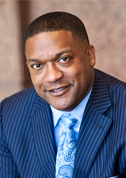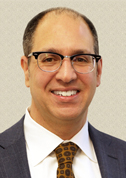© 2014 The Texas Lawbook.
By Kerry Curry
Special Contributing Writer for The Texas Lawbook
It’s been 20 years since Fred Bartlit and Philip Beck turned the typical law firm structure on its head and opened a firm that shunned the billable hour.
Today, Bartlit remains revered for championing innovative price structuring in complex, high-stakes litigation, bringing national prominence to a firm that refuses to bill by the hour. But much time has passed, and Bartlit remains the exception, not the rule. While alternative fee arrangements have gained staying power, they show no evidence of overtaking the billable hour.

“When we started in 1993, we felt we had a five-year window before our competition followed our innovation,” Bartlit said of his Denver/Chicago alternative fee law firm, Bartlit Beck Herman Palenchar & Scott LLP. “We were wrong.”
Christopher Catapano, president of Bridgesphere, believes alternative fees have staying power and growth potential. The San Francisco-based consultant focuses on improving law firm financial performance.
“Industry acceptance as to whether alternative fee arrangements are here to stay is — in some minds — still up for debate,” he said. “But I think if you look at the legal services industry and compare it to any well-developed industry in the United States, alternative fee arrangements are more than likely here to stay and more than likely a long-term reality that law firms will have to wrestle with.”

The reasons are multifaceted. The legal industry has become more commoditized with lower barriers to entry and more standardized pricing, for example. In addition, during the Great Recession, corporations — especially large publically traded companies — took a fine-toothed comb to legal expenses, looking for ways to reduce costs. That scrutiny continues today. In some instances, sky-high hourly rates in some locales have turned corporations seeking outside legal assistance away from the billable hour in search of alternatives.
Firms who excel in identifying when alternative fee arrangements make sense could have a leg up over competitors, Catapano believes.
“Technology and a greater focus on business intelligence and law firm management will allow certain firms to identify areas of their practice where they have an advantage that their law firm competitors don’t have,” Catapano said. “They will begin to migrate those services toward alternative fee arrangements.”
That migration, he predicts, will be extremely slow. “But the thought is, if it’s happened in a finite area of legal services today, there is no reason to think that the migration won’t continue,” Catapano said. “The general trend is the buyer wants to share financial risk with the law firm. The reality, however, is not all clients like alternative fees, and that is something that catches some law firms by surprise.”
Alternative fee arrangements have been used to date in a wide variety of disciplines from transactional business law to the complex courtroom litigation handled by Bartlit Beck. Some are also using it in appellate law.
Dissatisfaction Still High
But while more lawyers are using alternative fee structures than in years past, according to the American Bar Association, this is no love affair.
Only 26 percent of legal departments and 11 percent of law firms reported they were “very satisfied” with alternative fees, according to the survey by ALM Legal Intelligence.
Kirk D. Willis, partner with The Willis Law Group in Dallas, believes he can identify the source of some of that dissatisfaction.
“When associates are short of hours they do what is called ‘time dumping’ on those flat fee cases because they know they get credit for billing those hours but no one is really hurt or impacted because it’s a flat fee,” Willis said. The relationship partner on the AFA cases gets dinged by other partners who notice time going into flat fee cases, which are not billable hours, Willis said. “They are not really putting in the time,” said Willis. “They are just time dumping. I’m not trying to cast aspersions on my brethren in the law, but it happens.”

Under the billable hour model, outside counsel’s goal is to bill enough hours to establish a profitable amount to justify the work to the firm’s executive committee while inside counsel’s goal is to answer to a board of directors seeking to save as much money as possible, Willis said.
Willis, who supports the use of alternative fees and has used a variety of AFAs over the past four years, believes AFAs help to blend the goals of inside and outside counsel together. But there are risks, and dissatisfaction over alternative fees can extend from the law firm to the client.
“If done wrong, it incentivizes the attorney to do less on the case and not vet the case fully,” Willis said. As an example, he says an attorney might not interview a critical witness because of pressures from the law firm’s executive committee to keep time to a minimum.
“It is of critical importance that the dollar amount decided upon keeps your law firm incentivized enough to make certain that all of the depositions and interviews are done,” he said.
Pros, Cons and Caveats
Attorney Paul J. Skiermont, a principal with Skiermont Puckett LLP in Dallas, learned about AFAs directly from the master, having spent 10 years at Bartlitt Beck. In July 2011, Skiermont and law partner Don Puckett opened their own firm, using fee arrangement concepts learned at Bartlit Beck. But unlike Barlit Beck, Skiermont still accepts hourly cases as well.
Alternative fee arrangements can work in the law firm’s favor, or against it, said Skiermont. For example, if there is a substantial period of inactivity, the firm is still generating a monthly fee. But if the activity is greater than anticipated, then the firm is spending more time than it expected for the fee negotiated.

“The idea is that at the end it all kind of evens out,” Skiermont said.
“The clients who like alternative fees like them for a variety of reasons but one of the primary reasons they like them is because they know exactly what the monthly invoice is going to say,” Skiermont said.
“We’ve had clients where our representation was the first time they used alternative fees,” he said.
Skiermont said obstacles arise when a client has never done an alternative fee and insists on sticking with hourly billing. He said he’s never had a client yet who has tried an alternative fee who wants to go back to hourly billing.
To protect itself, all of Skiermont Puckett’s alternative fee agreements have a clause that if the nature of the case changes substantially both sides agree to revisit the agreement. That could mean adjusting the fee downward or upward, he said.
Big Law Challenges
Bartlit believes his AFA model simply cannot work with Big Law, and is only workable with small to midsized firms.
“My business model means that most law firms have 60 to 80 percent more litigation associates than they need because I operate with small teams—three to four lawyers on most cases,” Bartlit said. Most large firms have a few partners and a large number of less experienced associates, roughly 3.5 associates to each partner, according to Bartlit’s estimates. Bartlit Beck, on the otherhand, has 3.5 partners for each associate.
“This reversal of the typical large firm partner/associate ratio gives us a major competitive advantage in experience,” Bartlit said.
“If you are the head of a law firm and someone tells you to put in the Bartlit Beck model, you’ve got to fire a bunch of associates. You’ve got all this empty real estate that you’ve got to get rid of, and you have to take huge write-offs. If you are 56 years old making your $4 or $5 million a year the way things are running, you are not going to do that.”
Bartlit Beck has about 60 lawyers. Skiermont, the former Bartlit Beck partner, believes a firm could go slightly larger and still maintain an AFA model that focuses on more partners than associates. After that, he believes it becomes more difficult to make the concept work financially.
“I do think that the bigger you get, the harder it is to do this,” Skiermont said. “I don’t think it is entirely dependent on size. The structure of the firm is as important, if not more important, as raw numbers of lawyers. It’s the mix of lawyers that will dictate whether the alternative fee model can be more or as profitable as the hourly billing model.”
Clients Weigh In
Adam P. Schiffer, founding partner of Schiffer Odom Hicks & Johnson PLLC in Houston, said clients, not law firms are driving AFAs.
“Typically, it’s the client who comes to me and has a specific (fee) arrangement in mind,” he said.

Still, he’s not seen much of an increase in requests for alternative fees, which he has fastidiously tracked for the past six years since he’s had his own firm.
“It’s been — within a phone call or two — pretty much the same number every year,” Schiffer said.
Jules Bernier, vice president of human resources and legal for Quebec-based Bath Fitter, said he recently sought and obtained an alternative fee arrangement for a Texas legal case and believes strongly in the concept. Bernier is a client of Dallas law firm Bailey Brauer PLLC, which is representing Bath Fitter in a breach of contract case.
“If Alex (Brauer) wouldn’t have charged us the fees they are charging — a fixed rate for the case in question — I probably wouldn’t have initiated a lawsuit,” Bernier said.
“This is probably the case for a lot of companies like us,” Bernier said. “Sometimes we are giving up the rights we have to sue, but with alternative fees it gives us a way to assess the costs. With lawyers you never know. You start (a legal case) and you receive a billing monthly and after a year or two years, you look at the bills and say ‘If I’d had known (the costs) from the beginning, I wouldn’t have initiated the lawsuit.’ ”
Bernier said he’s pressing other firms to provide alternative pricing as well, including New York firms where he said the company has been charged as much as $1,500 an hour for acquisition work.
“The risks are always on our side when you are charging on an hourly basis,” Bernier said. “I’m talking to firms about sharing the risk.”
Alexander M. Brauer and business partner Clayton E. Bailey started their trial and appellate practice in May 2013. The opportunity to do flexible billing arrangements was one of the reasons for its formation.

“It’s something that the market is starting to demand more and more and clients are looking for that option,” Brauer said. “To be competitive, you have to be open to those sorts of arrangements. So far—and we’ve had limited experience—a total of three arrangements, but in each case it has been successful on both sides. The client has been happy with how the fees and costs worked out, and we’ve been happy as well.”
Tread Carefully
Catapano warns law firms not to make alternative fee arrangements a loss-leader and to make sure they are charging appropriate fees.
“AFAs can be attractive if a law firm has built a process or a system that allows them to very efficiently manage a somewhat homogenous portfolio of matters,” he said.
They also work well to bring in a new client with a limited scope of needs, allowing the firm to prove that they can handle basic matters in an efficient matter, thus paving the way for more work from the client in the future, including traditional billable hour representation, Catapano said.
A variety of things should be studied when a firm is considering AFAs, including not just looking at who will do the work and how long it will take, but also what time in the billing cycle the AFA work takes place. Because a law firm is a high-margin business, small mistakes in pricing can have large ramifications, Catapano said. Firms should be certain they’ll strategically benefit from alternative fees, before instituting them, he said.
Brauer believes alternative fees are easiest to use in straightforward legal matters, not in complex commercial litigation, which can be unpredictable.
“I would recommend and encourage the use of alternative fee arrangements with the understanding that I suspect — for a majority of commercial litigators — the hourly billing arrangements will be the default and constitute the majority of fee arrangements. There are certainly ways to make alternative fee arrangements successful. There is definitely a place for them.”

Irina Plumlee, a shareholder at Munsch Hardt Kopf & Harr, P.C., a large firm with 114 lawyers at offices in Austin, Dallas and Houston, predicts future movement toward alternative fees on the horizon even for bigger firms.
“I really think this is where the practice is going,” Plumlee said. “For years, there’s been talk of walking away from billable hours, and billable hours are dead. I don’t think they are quite dead yet, but I think the legal field definitely welcomes alternatives.”
© 2014 The Texas Lawbook. Content of The Texas Lawbook is controlled and protected by specific licensing agreements with our subscribers and under federal copyright laws. Any distribution of this content without the consent of The Texas Lawbook is prohibited.
If you see any inaccuracy in any article in The Texas Lawbook, please contact us. Our goal is content that is 100% true and accurate. Thank you.
